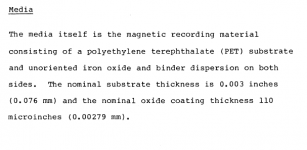Hi and thanks for answering in advance.
Did You known how to make You own floppy disk(e.g. 5,25)? Maybe there is some "recipe" from old times? I known at least one but quite modern - using CDs and compact cassette magnetic tape, but it is from times when was easier to buy a cassette in local shop like Walmart.
Did You known how to make You own floppy disk(e.g. 5,25)? Maybe there is some "recipe" from old times? I known at least one but quite modern - using CDs and compact cassette magnetic tape, but it is from times when was easier to buy a cassette in local shop like Walmart.

